In every kitchen there are a number of basic cooking utensils that are necessary for everyday cooking. When it comes to traditional cooking utensils were made from clay, stone or wood. Today, we have a variety of cooking utensils that influence our cooking and the flavor of the dish prepared.
In Trinidad and Tobago, it is the same, but there are utensils that are more important than others. This list provides the basic, traditional utensils, commonly used to prepare the Trini and Caribbean recipes in this blog. thus, these utensils are especially handy and make cooking easy. So Caribbean kitchen could do without this set of utensils.
Here are ten common cooking utensils necessary for Trini Cooking.
1. Pots and Pans
We qualify a good cooking utensil as one that distributes heat evenly and uniformly. A poor cooking utensil will develop hot spots that are likely to burn or scorch the food being cooked. Two factors that determine a good pot are: its thickness on the bottom and the kind of metal. The kinds of metal affect the transfer or disperse of heat.
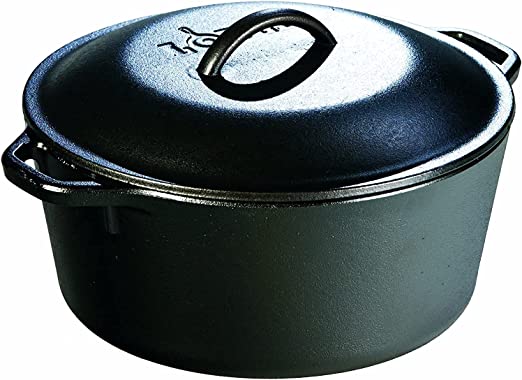
There are 5 commonly used metal pans.
- Aluminum. This cooking utensil is light weight and easy to handle while cooking. It is a good conductor of heat, but could be dented easily. It should not be used to cook strong acids, because it reacts chemically with many foods and tends to discolour light-coloured foods and sauces. Note: the Calphalon brand is made of anodized aluminum. It’s hard surface is more corrosion-resistant than regular aluminum pans. Most have nonstick finish and are less porous.
- Copper. This cooking utensil is the best heat conductor of all all pots, but is is expensive and requires a lot of care. Note: This utensil should be line with another metal such as tin or stainless steel to protect the food from getting poisoned.
- Stainless steel. This cooking utensil is a poor heat conductor. Therefore, food tends to scorch easily in this pan. It is ideal for low-temperature cooking and steaming. Stainless steel pot and pans are better heat conductors when they are layered with a copper or aluminum bonded to the bottom or lined with a heavy aluminum on the inside, or inside and outside.
- Cast iron– This is a favorite kitchen utensil for cooking. It has the ability to distribute heat evenly and maintain high temperatures for long periods. However, care is also required for this cooking utensil. It can crack if dropped, and it can rust if not cleaned properly.
- An Iron pot – A heavy cast iron pot is also called a caldero or caldron. This main pot is similar to the Dutch Oven. The iron pot is used to cook meat, stews, soups and rice dishes such as pelau and mixed rice.
- Nonstick plastic-type coating. The brands such as Teflon and Silverston have a slippery finish but requires a lot of care because they scratch easily.
2. Pastelle Press
A pastelle press is available in many sizes and is made of wood or metallic or plastic. It is inexpensive as well. The wooden pastelle presses are more commmon and can help you save a lot of time in the kitchen as well. The only substitute for it is a rolling pin or bailna, but it would take a lot longer to flatten the dough.
Recipes for use of a Pastelle Press
This cooking utensil is mainly used to make the dishes from our Spanish influence like pastelles, empanadas, arepas, etc. In our country we do not make tortillas like the Mexicans, but instead, around the Christmas season we make pastelles, which has a process similar to making tortillas, hence we have the pastelle press. The only difference between the two is that tortilla presses also come in metal ( that’s until somebody decides to import them into the country!). So long story short, same machine different name.
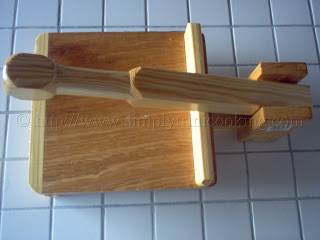
The pastelle press is especially handy for making pastelles in Trinidad.
It helps make large amounts of pastelles quickly and easily.
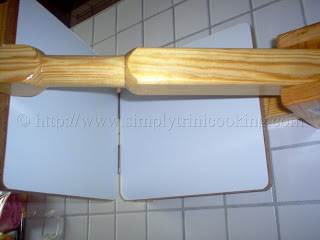
It is similar to a tortilla press.
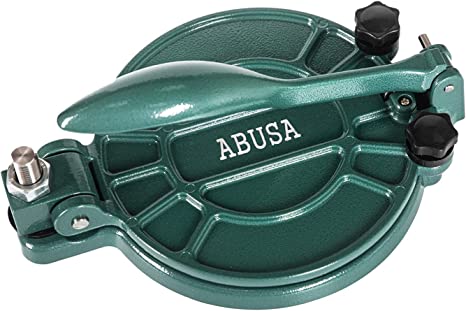
Tips for Using Your Press
- To prevent the dough from sticking to the plates, line them with squares of banana leaves.
- Oil the dough before pressing to prevent cracks in the dough and help the dough peel off the leaves.
- The tortilla press can also be used to shape flat breads.
Caring for your Pastelle Press
Clean your wooden press with a a little dishwashing liquid and water. Then wipe clean with a damp cloth.
You can buy one of these inexpensive kitchen utensils in a regular supermarket, especially during the Christmas season. They are usually inexpensive and ensure you make as much pastelles as you like on a limited budget. You can also, make your own press as well. Challenge yourself! Here, I have a pastelle press plan that you would love to try.
Click here for your free pastelle press plan.
3. Mortar and Pestle
A Mortar and pestle is used to crush, grind, and mash ingredients. The conventional mortar and pestles were used to grind spices and food. This is another handy cooking utensil if you don’t have an electric blender or food processor.
Different uses of a mortar and pestle
Long ago, the larger version was also used to pound cocoa and coffee (this tradition is still alive in some communities). Their various sizes suit their varied purposes – for heavy duty jobs you should use a 1 to 3 cup capacity heavy duty mortar and pestle; whereas, for smaller jobs such as when you are pounding spices and herbs, you should use a smaller capacity. The smaller type is used for generally crushing garlic, herbs, and seasoning; while a little larger type is used for crushing foods such plantains and other provisions.
The mortar and pestle was mostly made of wood in the olden days. Smaller commercial versions of it are now available in ceramic, stone and metal.
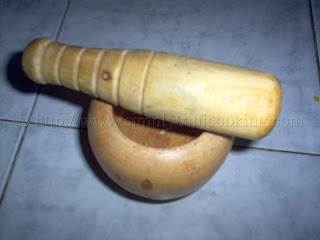
A mortar and pestle. This is unquestionably the best way to crush herbs.
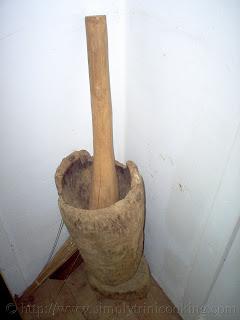
An old mortar and pestle once used on the the estate of “La Reconnaissance”,
now on display in the Historical house at Lopinot Complex.
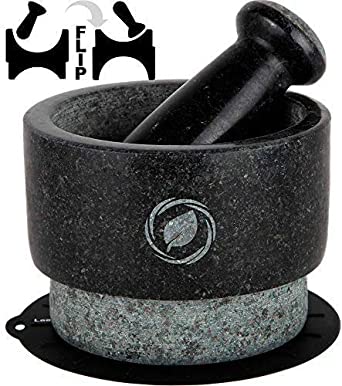
4. Bailna or Rolling Pin
A bailna or rolling pin is a simple kitchen tool used to roll out doughs to make breads, roti or bake. Yes, even pizza doughs. The rolling pin can be traced as far back in 800 B.C. among a group of people called the Etruscans. Their civilization existed in ancient Italy. They were people who were advanced in farming and animal husbandry. Their culture is associated with gourmet cooking. The rolling pin was one of their inventions.
The basic shape of a bailna or rolling pin are Rod types pins or Rolling or French type pins.
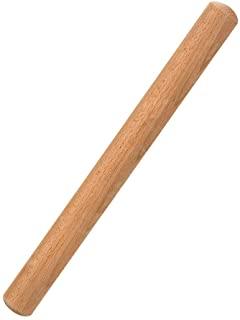
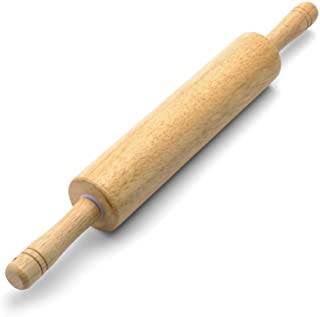
Bailna or Rolling Pin: The Many Materials
A bailna or rolling pin is made of baked clay, smooth branches with the bark removed, glass or marble. However the popularity of breads in Europe saw the perfecting of the rolling pins we know today: wooden with tapered ends.
This utensil is commonly made of wood, but nowadays, it is commercially made out of plastic and other materials. But the wooden bailna, from my experience, is the best. It is also handy for making crumbs easily. Just place crackers or toasted bread in a paper bag or wax paper and crush it with the rolling pin.
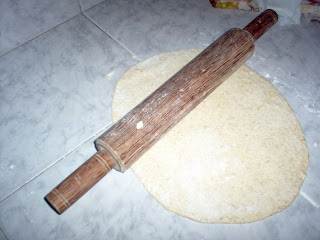
Bailna or Rolling Pin you could buy
A stainless steel metal rolling pin like this one is also perfect for buttery doughs. This rod design allows you to add the right amount of pressure to the dough. It has the cooling properties of marble stone, but it is not as heavy and it is more hygienic. Even kids can use it for craft clay and play-doh. You could also find some with handles.
The polished marble rolling pins like this one is cool and smooth. It keeps pastry doughs cool and prevents sticking. It is therefore perfect for buttery doughs on marble slabs. They are easy to clean. Just wash with warm water.
Most marble rolling pins are hand crafted design. They are beautiful. In the kitchen, they roll out pizzas, cookies, bread, fondant, crush nuts and tenderize meat. They do not get moldy and hold odor. Another rolling pin you may be interested in is the Chinese Jade Stone Rolling Pin.
A silicone rolling pin is a modern rolling pin. it comes in two handy sizes (12 inches and 9 inches). It is smooth and does not hold any odor. It also does not stick to the dough.
You can find rolling pins with amazing patterns engraved on them. These rolling pins allow you to make beautiful looking cookies or decorative pie crusts. Most are made of wood.
The classic rolling pin is made of hardwood wood (most times pf pine, cherry or maple). Hardwood is durable and moisture resistant. Most are comfortable to hold and easy to control. There are variations of the classic wood rolling pin and it comes in various sizes. Your wood rolling pins should be wiped with food grade oil that would not go rancid (such as coconut oil or Block oil) to create a waterproof seal, to keep pastry from sticking to it, and to keep the wood from drying out. Never let you wood rolling pin sit in water.
You cannot do without this cooking utensil in the kitchen.
5. Tawah
A Tawa (tawah) or Platin is similar to a griddle. It is another cast iron cooking utensil that a Trini cannot do without. It is used for making bake and roti (and for me a good substitute for baking pizza). They come in various sizes as well. The larger ones are used for making buss-up-shut ( paratha roti) for weddings and other large occasions.
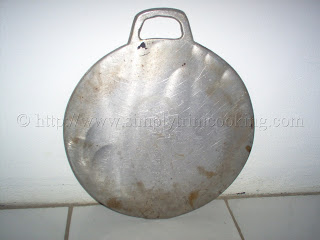
6. Kalchul
Kalchul (a metl ladle) is usually made of stainless steel or other metal and used mainly when chongkaying dhal and choka. This cooking utensil is especially important when preparing some East Indian dishes, besides scooping out soup. For this reason, I found that it is best to have at least two of these cooking utensils.
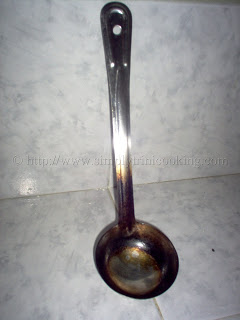
7. Goblet
A Goblet is an earthen ware jar used for storing water long time. It would be in an accessible but safe place in the kitchen only to be bent over to pour out the cool rain water. Many years ago, when my grandmother was alive, I could remember her giving me water from this same goblet in the picture. It was customary to use a cover the spout with a Vat 19 rum cover – many Trinis would know what I’m talking about. Even though the goblet has given way to the refrigerator, I still keep this as a souvenir of our past. This jar is more than 60 years old.
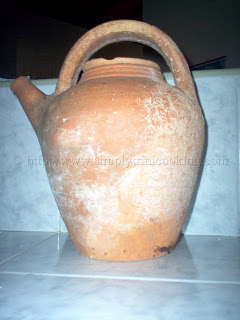
8. Swizzle Stick
A Swizzle stick (no, not the one that is used to mix cocktail drinks, etc.) is used for mixing powdered milk or any other powder and water mixture. Some people even use it to mix callaloo. This is another simple but effective utensil found in any Trini kitchen. The swizzle stick is used similarly to the dhal gutney; twirling between the hands. It is made by coiling wire and then wrapping the coils, usually three, around the stick used. This is another easy utensil to make if you’re a D.I.Y person. To learn how to make a Trini swizzle stick click here.
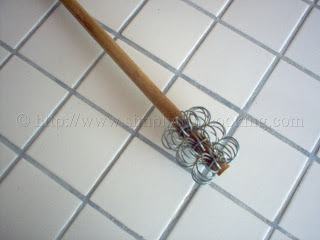
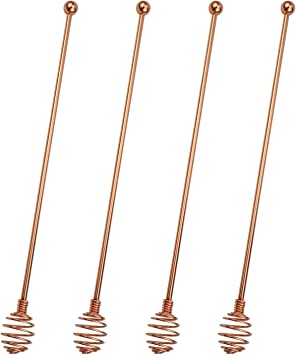
9. Dhal Gutney
The Dhal gutney or dhal gutni (dal goot – nee) is a wooden cooking utensil, common in local East Indian cooking, and used especially when making dhal. After the split peas has boiled, the dhal gutney is used to break up the peas into a pureed consistency by swizzling it between your hands. The dhal gutney can also be used to swizzle callaloo.
A Dhal Gutney (dhal gutni) or the Blender?
Back in the day, this was the main utensil used when making dhal, but with the advent of electric appliances people are now using blenders to puree the dhal or callaloo – unless there is a blackout. Usually, the dhal gutney is made of white pine wood because it is odourless, and is also light to manoever. In some instances, people call this utensil a wooden swizzle stick to differentiate between the other popular swizzle stick we use in Trinidad and Tobago.
Making Your Own Dhal Gutney
As a boy growing up, making a dhal gutney was just a normal pastime. I could remember spending hours planing the wood for the handle to get it just right… now wooden dowels are sold at the hardware. So being one who shares my knowledge, I invite you to click here to learn how to make a dhal gutney. It’s really simple to make and you’ll be swizzling your own dhal by hand, the traditional Trini way, in no time.
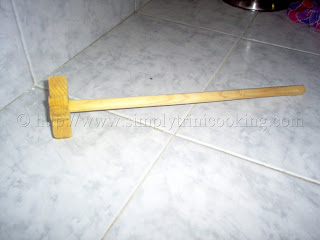
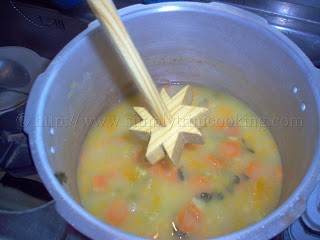
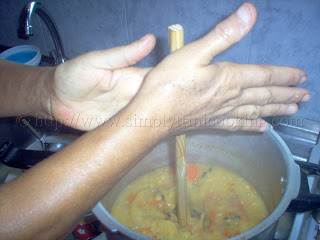
The swizzle stick and dhal gutney are two similar cooking utensils used when preparing meals. However they are used to produce different consistencies.
10. Dabla
The Dabla are two long wooden spatulas used when making buss-up-shut (paratha roti). The dabla is used to turn the roti. When it is cooked, the roti is slapped together with the dabla to create the ripped up effect. Of course there are also different sizes and styles of dabla, ranging from about four feet to about one foot (like the one shown in the picture).
The Dabla: A Handy Cooking Utensil
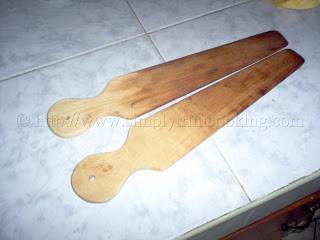
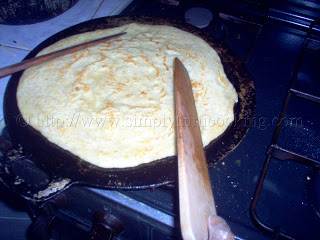
Here you can see how the dabla is used.
Tell us, what are your favorite cooking utensils?

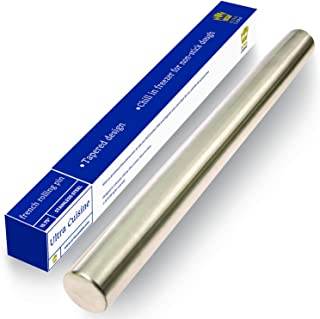
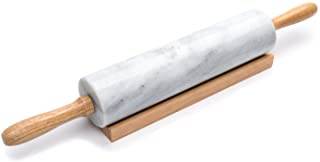
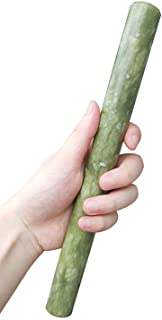
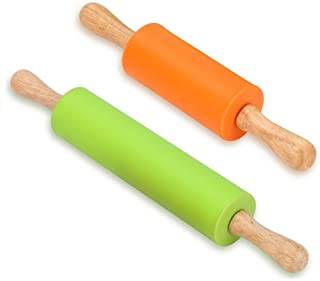
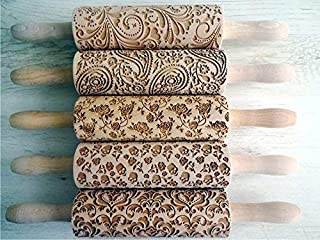
Where could I buy a dabla from in the states or do they only sell it in Trinidad how much does it cost
I have no idea but a good starting place would be a West Indian market of some sort. I do not know the price since it could vary based on size of the dabla.